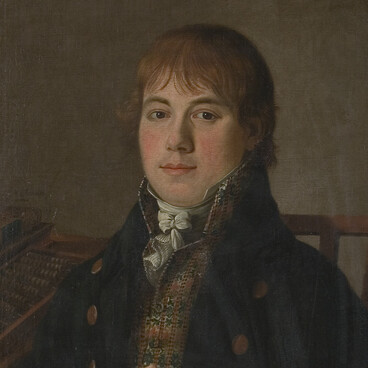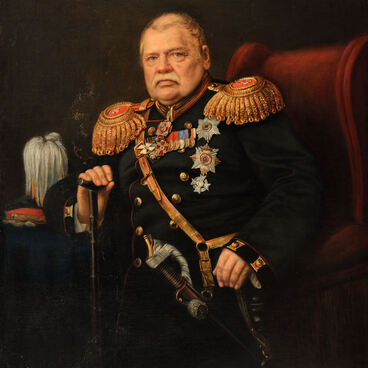In its rapid development, the 18th-century portraiture in Saint Petersburg sharply differed from provincial portrait painting. Echoing the style of parsuna, an early genre of portrait, it was less connected with the medieval tradition. In the early 18th century, foreign artists were invited to work in the Russian capital, forming a fashionable court style, which was represented by the French artist Louis Caravaque, one of the first to arrive in Russia. A favorite painter of Elizabeth Petrovna, he painted her coronation portrait, which became the official image of the empress and was often copied by many artists.
The “Portrait of Empress Elizabeth Petrovna”, housed in the National Art Museum of the Sakha Republic, which once decorated the voivodeship office of Yakutsk, was received in very poor condition. Its iconography belongs to the Caravaque-Antropov type of portrait and is closer to the work that is kept in the Tula Regional Museum. Referring to the original, the unknown artist also turns to the techniques of the Old Russian parsuna painting, which Caravaque himself also used, but in a softer manner. This is reflected in the static posture, which creates a sense of monumentality.
The empress was famous for her beauty and luxurious outfits, which were always noted by foreign ambassadors who came to the Russian court. Elizabeth had a lot of jewelry sets. In the portrait from the collection of the National Art Museum of the Sakha Republic, she is depicted with regal poise, studded with diamonds. On her head is a small crown and an aigrette in her hair. She wears a plastron necklace — a most elegant jewelry piece made by the then fashionable jeweler Jérémie Pauzié — and an ermine mantle on the shoulders. Unfortunately, the earrings and the badge of the Order of St. Andrew the Apostle the First-Called are barely visible — its ribbon, which once was blue, is thrown over the shoulder of the empress.
Historians note that the empress continued her father’s work: Peter the Great strengthened the Russian statehood, and during her reign, culture and sciences flourished in Russia, and the army won a number of brilliant victories. Much of what was created under Elizabeth still plays an important role in the cultural and scientific life of Russia — for example, the Moscow University and the Academy of Arts.
The “Portrait of Empress Elizabeth Petrovna”, housed in the National Art Museum of the Sakha Republic, which once decorated the voivodeship office of Yakutsk, was received in very poor condition. Its iconography belongs to the Caravaque-Antropov type of portrait and is closer to the work that is kept in the Tula Regional Museum. Referring to the original, the unknown artist also turns to the techniques of the Old Russian parsuna painting, which Caravaque himself also used, but in a softer manner. This is reflected in the static posture, which creates a sense of monumentality.
The empress was famous for her beauty and luxurious outfits, which were always noted by foreign ambassadors who came to the Russian court. Elizabeth had a lot of jewelry sets. In the portrait from the collection of the National Art Museum of the Sakha Republic, she is depicted with regal poise, studded with diamonds. On her head is a small crown and an aigrette in her hair. She wears a plastron necklace — a most elegant jewelry piece made by the then fashionable jeweler Jérémie Pauzié — and an ermine mantle on the shoulders. Unfortunately, the earrings and the badge of the Order of St. Andrew the Apostle the First-Called are barely visible — its ribbon, which once was blue, is thrown over the shoulder of the empress.
Historians note that the empress continued her father’s work: Peter the Great strengthened the Russian statehood, and during her reign, culture and sciences flourished in Russia, and the army won a number of brilliant victories. Much of what was created under Elizabeth still plays an important role in the cultural and scientific life of Russia — for example, the Moscow University and the Academy of Arts.



